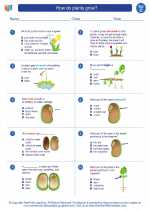Cnidarians
Overview
Cnidarians are a diverse group of invertebrate animals found in marine environments. They are characterized by their radial symmetry and specialized stinging cells called cnidocytes, which they use for capturing prey and defense.
Anatomy
Cnidarians have a simple body plan that consists of a central body cavity surrounded by tentacles. The body cavity is called the gastrovascular cavity, which serves both as a stomach for digestion and a means of circulating nutrients and gases.
Reproduction
Cnidarians can reproduce both sexually and asexually. They typically have a polyp stage, where they are attached to a substrate, and a medusa stage, where they are free-swimming. These different stages allow for a varied reproductive strategy.
Types of Cnidarians
- Jellyfish: Free-swimming medusae with trailing tentacles.
- Corals: Colonial polyps that secrete calcium carbonate to form reefs.
- Sea Anemones: Solitary polyps that resemble flowers and are often found attached to rocks or other substrates.
- Hydrozoans: Diverse group that includes both solitary and colonial forms, such as the Portuguese man o' war.
Ecological Importance
Cnidarians play a crucial role in marine ecosystems. Coral reefs, in particular, provide habitat for a wide variety of marine organisms and help protect coastlines from erosion.
Study Guide
Here are some key points to remember when studying cnidarians:
- What are the defining characteristics of cnidarians?
- Describe the anatomy of a typical cnidarian.
- Compare and contrast the different reproductive strategies of cnidarians.
- Identify and describe the various types of cnidarians, including examples of each.
- Explain the ecological importance of cnidarians in marine environments.
[Cnidarians] Related Worksheets and Study Guides:
.◂Science Worksheets and Study Guides Third Grade. How do plants grow?

 Activity Lesson
Activity Lesson
 Worksheet/Answer key
Worksheet/Answer key
 Worksheet/Answer key
Worksheet/Answer key
 Worksheet/Answer key
Worksheet/Answer key
 Worksheet/Answer key
Worksheet/Answer key
 Vocabulary/Answer key
Vocabulary/Answer key
 Vocabulary/Answer key
Vocabulary/Answer key
